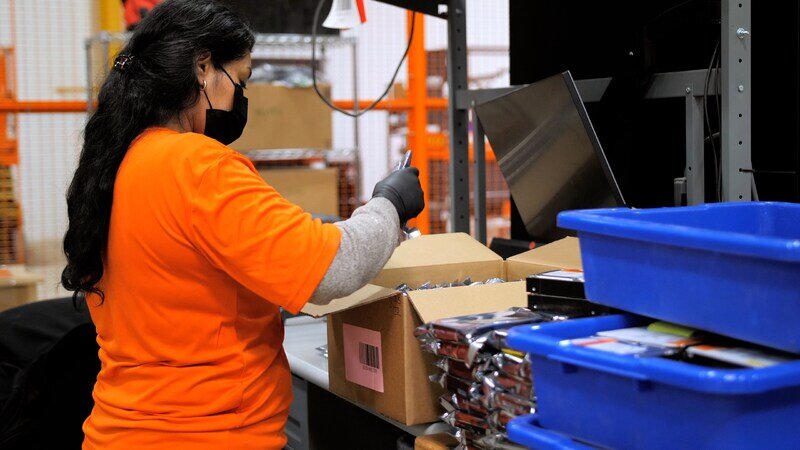Where Hyperscale Hardware Goes to Retire: A Visit to a Major ITAD Site

"The biggest risk is data escape."
Eric Ingebretsen, the chief commercial officer at SK TES, an IT asset disposition (ITAD) provider, emphasized this during our tour of a sprawling 128,000-square-foot facility in Fredericksburg, Virginia. This is a sentiment he repeated several times.
This facility pitches a straightforward service to its clients, which include hyperscale customers with huge data centers. Each piece of equipment is labeled, tracked, and inventoried before being either securely wiped or destroyed, ensuring complete confidentiality. Large businesses frequently use ITAD services like these when upgrading entire fleets of servers or employee hardware. The goal is simple: ensure old devices are cleared of data and then resold, recycled, repurposed, or destroyed.
For confidentiality reasons, I couldn’t take photos, videos, or audio recordings of my visit, nor could I share anything more than my handwritten notes. However, I learned plenty about what happens to the hardware and data drives that comprise "the cloud" once it ages.
Undocumented Drives: The Tiny Terror
The facility's loading docks are primarily split into two: one for hyperscalers and another for everything else. SK TES remains discreet about its clients, but given its northern Virginia location, one can speculate about several of the significant companies utilizing its services.
Pallets, shrink-wrapped and sealed for security, arrive several feet tall. Each device has an asset tag correlated to a unique serial number, staying with that item through its journey within the facility. From here, desktops and laptops make their way down a processing line equipped with software to reset them at a firmware level. Occasionally, more intricate methods are used, like secure shell access or RAID setup disassembly for intricate data wiping.
The devices' components—the CPU, memory, and storage capacity—are recorded and aligned with the corresponding asset tag. As each device undergoes a physical examination, many undisclosed drives, such as USBs, SD cards, or small SSDs, are uncovered, often installed unofficially. According to Kent Green, the site manager, it is not uncommon for such hidden storage solutions to surprise the original employers.
After thorough wiping and evaluation, devices are graded based on functionality, appearance, and part value, before proceeding to their next phase: wholesale, retail, component harvesting, or scrap.
Full-Body Laptop Skins
If deemed valuable, the device moves to further inspection. Automated tools test speakers, keyboards, and battery conditions. A quirky find during my visit was the facility's use of adhesive laptop skins, perfectly matching specific model finishes to cover imperfections. Once refurbished, these laptops, protective skin applied, are packaged and prepared for retail.
5,632 HDDs at Once
The facility also processes a massive volume of hard drives. With over two dozen wiping bays, each fitting around 192 drives, the capacity for simultaneous wipe sits at an impressive 5,632 units. The facility processed about 58,000 drives the month preceding my visit.
In its non-retail sections, the facility stores vast amounts of CPU chips and memory modules. A particularly fascinating piece of tech, the RoboFlex-II Handler, tests the memory modules' pins, sorting them into "Good" or "Bad" faster than you could imagine. It's reminiscent of scenes from childhood films, complete with air blasts to direct the modules accordingly.
The products emerging from ITAD, like SK TES, are scattered into markets worldwide. Laptops, desktops, and other devices find resale channels on platforms such as "Stock Must Go" on eBay. High-volume customers purchase chips and memory, often data centers or tech labs, contributing approximately $2.5 million in monthly sales, as described by a facility representative.
Big Data: Constantly Growing
While refurbishing is a significant focus, some ITAD clients demand complete destruction, following strict data shredding policies. It's predicted that by 2025, 50 million data center drives will meet the shredder annually.
SK TES helps companies monetize old equipment by revamping instead of scrapping, generating funds for reinvestment. With data centers contributing to an explosive 500 percent regional growth, facilitated by facilities like this, ITAD proves itself an essential player in tech profligacy and efficiency.